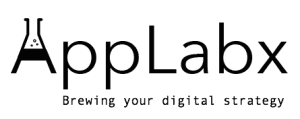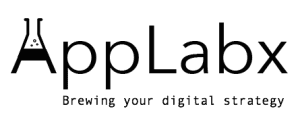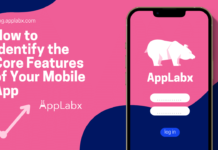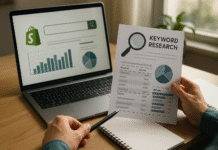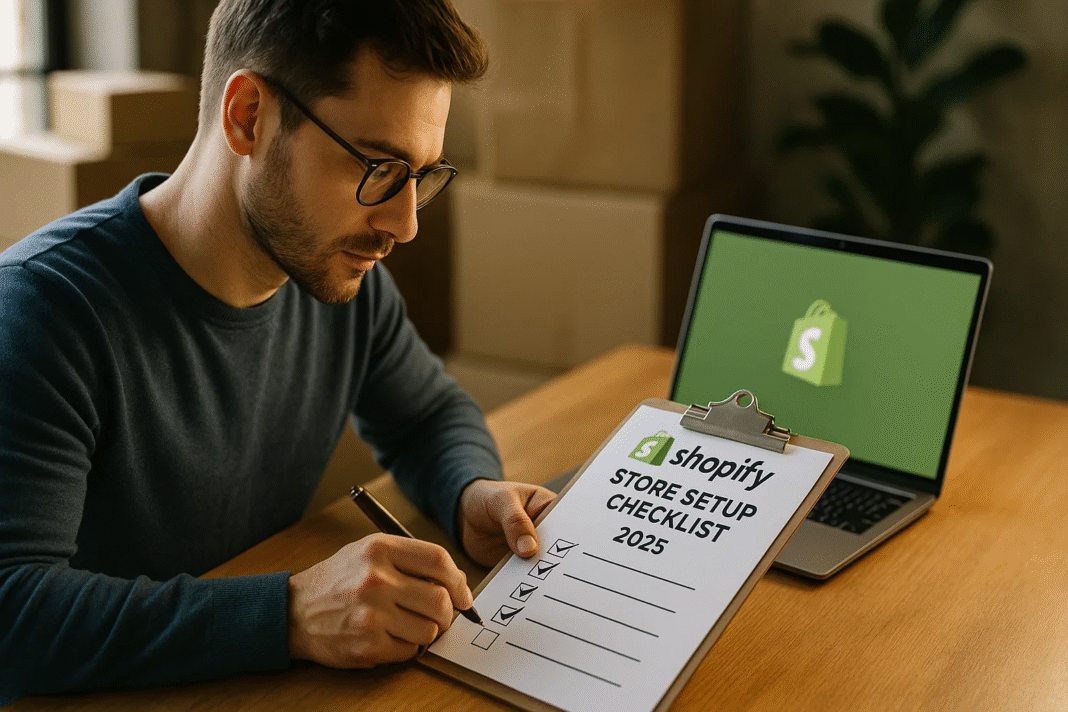Key Takeaways
- Follow a comprehensive Shopify store setup checklist to ensure a smooth and successful launch in 2025.
- Optimize product listings, SEO, and legal pages to boost visibility and build customer trust.
- Implement effective post-launch strategies and app integrations to drive growth and maximize sales.
Launching a Shopify store in 2025 offers more opportunity than ever before, but it also demands a more strategic and structured approach. With the eCommerce landscape evolving at lightning speed, today’s online entrepreneurs must navigate an increasingly competitive marketplace fueled by emerging technologies, shifting consumer behavior, and rising expectations for seamless digital experiences. Whether you’re a first-time founder or a seasoned seller transitioning to Shopify, building a professional, high-converting store starts with a well-defined checklist — and that’s exactly what this guide delivers.
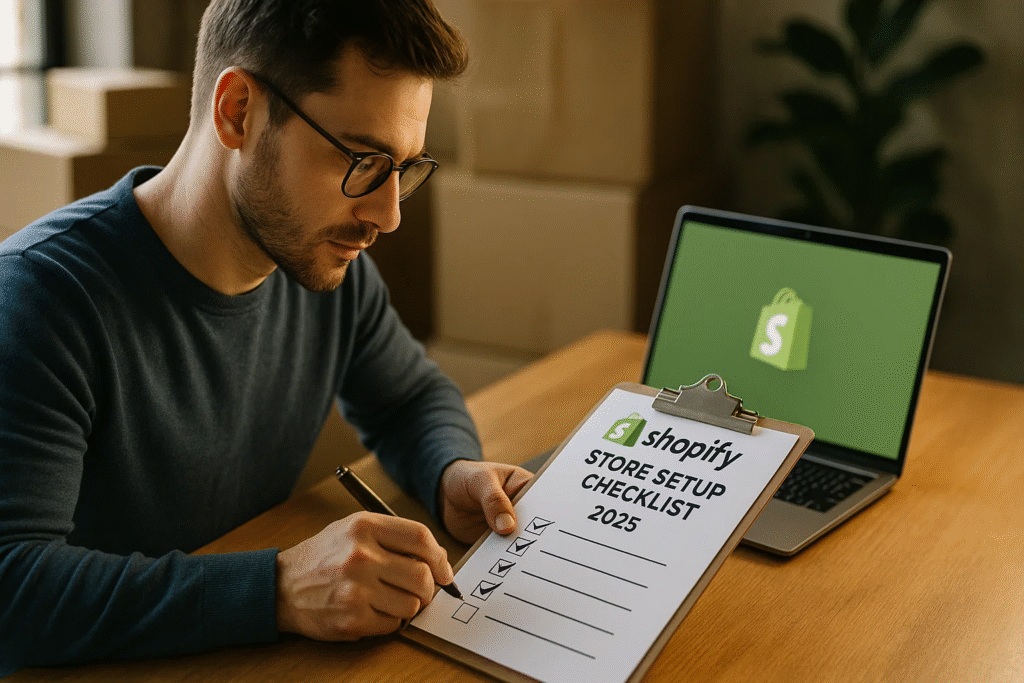
Shopify has maintained its position as one of the most powerful and accessible eCommerce platforms on the market. As of 2025, it powers millions of businesses globally and continues to innovate with AI-powered tools, integrated automation, native SEO features, and enhanced mobile optimization. However, simply launching a Shopify store is no longer enough. Success in today’s environment requires meticulous planning, from niche research and design customization to SEO implementation, app integrations, and post-launch marketing strategies. Each element must work together to create an exceptional customer experience, drive traffic, and ultimately increase sales.
The purpose of this Shopify store setup checklist is to help you streamline the store-building process and avoid costly missteps. In this comprehensive guide, we’ll walk you through every phase of store setup — from laying the groundwork with product validation and legal readiness to customizing your site design, configuring technical settings, and launching with confidence. You’ll also learn how to optimize your Shopify store for search engines, boost conversions through proven design and copywriting techniques, and leverage the latest tools available in 2025 to scale effectively.
Whether you’re planning to sell physical products, digital goods, print-on-demand items, or drop-shipped merchandise, this checklist will serve as your blueprint for building a professional online store that’s fully optimized for growth. By following this step-by-step guide, you’ll not only accelerate your launch timeline but also lay the foundation for long-term success in a competitive eCommerce environment.
Ready to turn your business idea into a fully functional Shopify store that attracts traffic and converts visitors into loyal customers? Let’s dive into the complete Shopify Store Setup Checklist for 2025.
But, before we venture further, we like to share who we are and what we do.
About AppLabx
From developing a solid marketing plan to creating compelling content, optimizing for search engines, leveraging social media, and utilizing paid advertising, AppLabx offers a comprehensive suite of digital marketing services designed to drive growth and profitability for your business.
AppLabx is well known for helping companies and startups use SEO to drive web traffic to their websites and web apps.
At AppLabx, we understand that no two businesses are alike. That’s why we take a personalized approach to every project, working closely with our clients to understand their unique needs and goals, and developing customized strategies to help them achieve success.
If you need a digital consultation, then send in an inquiry here.
Shopify Store Setup Checklist 2025: Your Step-by-Step Guide to Launching Successfully
- Understanding the Shopify Ecosystem in 2025
- Pre-Launch Preparation
- Setting Up Your Shopify Store
- Adding Products Effectively
- Setting Up Store Essentials
- Legal & Trust Pages
- Apps & Integrations for Growth
- SEO Optimization for Your Shopify Store
- Launch Preparation Checklist
- Post-Launch Strategy
1. Understanding the Shopify Ecosystem in 2025
As we enter 2025, the Shopify ecosystem continues to evolve into one of the most robust, flexible, and innovation-driven platforms in the global eCommerce space. Whether you’re launching a startup or scaling an existing brand, understanding how Shopify’s tools, services, and integrations work together is essential for success. This section breaks down the core elements of Shopify’s ecosystem in 2025, giving you a clear strategic advantage when building your store.
The Core of Shopify in 2025
Shopify as an All-in-One eCommerce Platform
- Fully hosted solution with built-in security and performance
- Cloud-based infrastructure with 99.99% uptime SLA
- User-friendly interface tailored for both beginners and developers
- Drag-and-drop store builder with advanced customization options
Main Benefits of Shopify in 2025
- AI-powered features (Shopify Magic) for auto-writing product descriptions, email campaigns, and blog content
- Enhanced native SEO features (structured data, schema markup, SEO audits)
- Expanded multi-channel integration: Sell on TikTok Shop, Instagram, Facebook, Pinterest, YouTube, and Google Shopping
- Advanced Shopify Analytics and GA4 support for deep performance insights
Shopify Pricing Plans in 2025
| Plan | Monthly Cost (USD) | Key Features |
|---|---|---|
| Starter | $9 | Link-in-bio style selling, ideal for creators and social sellers |
| Basic | $39 | Full online store, 2 staff accounts, basic reports, 24/7 support |
| Shopify | $105 | Professional reports, 5 staff accounts, better shipping discounts |
| Advanced | $399 | Custom reporting, up to 15 staff, third-party calculated shipping rates |
| Shopify Plus | Starts at $2,300 | Enterprise-grade features, full API access, Shopify Flow automation, custom SLAs |
Note: Shopify in 2025 also offers flexible billing (monthly/annual), and new discounts for startups via Shopify’s “Build & Scale” initiative.
New and Enhanced Features in 2025
1. Shopify Magic (AI-Powered Tools)
- Automated product description generation based on keywords
- Smart reply in Shopify Inbox for customer service
- AI-generated blog post outlines and email subject lines
Example: A fashion store can auto-generate seasonal product descriptions using AI, saving hours in manual content writing.
2. Shopify Sidekick (AI Assistant)
- Intelligent virtual assistant for store owners
- Provides insights, helps set up automations, and improves workflows
- Can answer questions like “How can I improve my cart abandonment rate?”
3. Improved Checkout Experience
- One-page checkout optimized for mobile-first shoppers
- Supports Shop Pay, Apple Pay, Google Pay, and 100+ third-party gateways
- Built-in upsells and A/B testing for checkout flows
Shopify App Ecosystem in 2025
Shopify’s App Store has expanded with thousands of integrations that automate, enhance, and scale store operations.
Popular App Categories:
- Marketing & Conversion: Klaviyo, Omnisend, ReConvert, Fera.ai
- SEO & Optimization: TinyIMG, Plug in SEO, Smart SEO
- Shipping & Fulfillment: ShipStation, Easyship, AfterShip
- Inventory & Dropshipping: DSers, Spocket, Printful
- Analytics & Reporting: Report Pundit, Better Reports
Must-Have Apps Matrix (by Store Type)
| Store Type | Essential Apps | Purpose |
|---|---|---|
| Fashion/Retail | Judge.me, Klaviyo, AfterShip | Reviews, email marketing, delivery tracking |
| Digital Products | SendOwl, Sky Pilot, TinyIMG | Secure delivery, content access, SEO |
| Dropshipping | DSers, Spocket, ReConvert | Product sourcing, upselling |
| Print-on-Demand | Printful, Printify, Track123 | Print services, order tracking |
| Local Delivery Stores | Zapiet, Route, Local Delivery Date by Mageworx | Localized delivery & order scheduling |
Third-Party Integrations and APIs
Shopify’s Integration Capabilities:
- Integrates with over 8,000 third-party apps
- REST & GraphQL APIs available for custom integrations
- Webhooks and custom events support for advanced automation
Key Platform Integrations:
- CRMs: HubSpot, Salesforce, Zoho CRM
- Accounting Software: QuickBooks, Xero
- Email Platforms: Klaviyo, Mailchimp, Omnisend
- Fulfillment Partners: Amazon FBA, ShipBob, Deliverr
Omnichannel Selling in 2025
Shopify enables centralized product, inventory, and order management across various sales channels.
Supported Sales Channels:
- Shopify POS (for physical retail and events)
- TikTok Shop, Meta Shops, YouTube Shopping
- Etsy, Amazon, Walmart Marketplace (via integrations)
Benefits of Omnichannel Capabilities:
- Real-time sync between online and offline sales
- Seamless customer data and loyalty tracking
- Ability to diversify revenue and reach targeted audiences
Example: A cosmetics brand can sync its Shopify catalog with TikTok Shop to run influencer-driven sales campaigns natively.
Developer and Theme Ecosystem
Themes in 2025:
- 150+ free and paid themes in the Shopify Theme Store
- Built using Shopify’s Online Store 2.0 (faster, modular, customizable)
- Drag-and-drop sections on every page
- Support for global color palettes, metafields, and dynamic content
Developer Tools:
- Hydrogen (Shopify’s React framework) for custom storefronts
- Shopify CLI and GitHub integration
- Access to Shopify Functions for customizing backend logic
Conclusion: Why Understanding the Ecosystem Matters
Mastering the Shopify ecosystem in 2025 is about more than just navigating features — it’s about understanding how each component supports a profitable and scalable business. From AI-powered selling tools to an ever-growing list of integrations and apps, Shopify gives store owners unmatched flexibility. Whether you’re building a niche store or a global brand, the ecosystem provides the technical and creative resources needed to compete in today’s eCommerce environment.
By understanding how to leverage Shopify’s tools strategically, you’re better equipped to avoid unnecessary costs, improve customer experience, and create a high-performing store that drives consistent revenue growth.
2. Pre-Launch Preparation
Before diving into the visual design or app integrations of your Shopify store, laying the groundwork is critical for long-term success. The pre-launch phase is where you validate your business model, understand your target audience, prepare legal essentials, and make strategic decisions that impact everything from branding to fulfillment. In 2025, competition in eCommerce is fiercer than ever, and thorough preparation separates high-performing stores from those that fail to gain traction.
This section outlines every pre-launch preparation step necessary for launching a profitable Shopify store. From market research to legal setup, this checklist ensures your store is strategically positioned to succeed from day one.
Market Research and Product Validation
Why It Matters in 2025
- Consumer behavior has become more data-driven, trend-sensitive, and segmented
- Selling without validation leads to inventory waste, poor engagement, and low ROI
Key Steps in Product Validation
- Identify a Profitable Niche
- Research trending products on platforms like Google Trends, TikTok, and Amazon Movers & Shakers
- Focus on evergreen niches (e.g., wellness, remote work, eco-friendly living)
- Analyze the Competition
- Use tools like SimilarWeb, SEMrush, and Ubersuggest to evaluate top competitors
- Assess product pricing, SEO strategies, and customer reviews
- Validate Demand
- Use surveys, polls, and Reddit/TikTok comments for direct market feedback
- Create a “coming soon” landing page to gauge interest and build an email list
Product Validation Matrix
| Validation Method | Tool/Platform | Goal |
|---|---|---|
| Keyword Research | Ubersuggest, Ahrefs | Find high-volume, low-competition terms |
| Competitor Analysis | SimilarWeb, SEMrush | Identify market gaps and pricing trends |
| Social Listening | TikTok, Reddit, Instagram | Detect trending products and pain points |
| Landing Page Testing | Unbounce, Mailchimp | Collect emails for early interest |
Business Essentials and Legal Setup
Register Your Business
- Choose a suitable business structure (LLC, Sole Proprietorship, etc.)
- Register your business with your country’s regulatory body (e.g., IRS in the U.S., ACRA in Singapore)
Apply for Necessary Permits
- Confirm if any licenses are required (especially for food, supplements, or medical products)
- Comply with international trade laws if selling cross-border
Set Up Business Banking and Accounting
- Open a dedicated business bank account
- Set up accounting tools like QuickBooks, Xero, or Wave for expense tracking
Protect Your Brand Legally
- Check for trademark conflicts on platforms like USPTO or WIPO
- Secure a unique domain name that aligns with your brand
Choosing the Right Domain Name
Best Practices for 2025
- Keep it short, memorable, and brandable
- Avoid hyphens and numbers
- Use keywords only if it feels natural and doesn’t dilute branding
Domain Extensions to Consider
- .com (global recognition)
- .store (eCommerce-specific)
- .shop (alternative if .com is unavailable)
- .co (modern branding appeal)
Domain Strategy Table
| Scenario | Recommended Domain Strategy |
|---|---|
| Local business | use .com or country-specific extension (e.g., .ca, .co.uk) |
| Global eCommerce store | prioritize .com or .store |
| Branding-first business | focus on short, unique names |
| SEO-focused niche store | consider including main keyword subtly |
Defining Your Unique Selling Proposition (USP)
Your USP sets your brand apart in a crowded marketplace. In 2025, consumers expect clear value and differentiation.
Elements of a Strong USP
- Clear value promise (e.g., fastest shipping, eco-conscious packaging)
- Emotional and practical benefit
- Evidence of credibility (testimonials, guarantees, certifications)
USP Examples by Industry
- Apparel: “Eco-friendly fashion that plants a tree with every order”
- Tech Accessories: “Minimalist phone cases built from recycled ocean plastic”
- Beauty: “Vegan skincare formulated for tropical climates”
Establishing Your Target Audience Persona
Understanding your ideal customer influences everything from product selection to advertising strategy.
Create Buyer Personas Based On:
- Demographics (age, gender, income, education)
- Psychographics (values, lifestyle, pain points)
- Digital behavior (preferred platforms, purchase triggers)
Buyer Persona Template
| Attribute | Example: Sustainable Skincare Buyer |
|---|---|
| Age Range | 25–40 |
| Location | Urban areas in US, UK, Canada |
| Income Level | $40K–$100K/year |
| Key Values | Sustainability, transparency, cruelty-free |
| Shopping Habits | Buys online via Instagram ads and reviews |
| Common Objections | Price sensitivity, skeptical of greenwashing |
Set Up Logistics and Fulfillment Planning
Determine Fulfillment Method
- In-house: Full control, but inventory and shipping management required
- Dropshipping: Low upfront cost, but reliant on third-party suppliers
- Print-on-Demand: Ideal for custom clothing, art, and gifts
- Third-Party Fulfillment (3PL): Scalable, reliable, but adds cost
Compare Fulfillment Models
| Fulfillment Model | Pros | Cons |
|---|---|---|
| In-house | Total control, faster shipping | Time-consuming, storage costs |
| Dropshipping | Low risk, minimal overhead | Low margins, supplier reliability issues |
| Print-on-Demand | Easy to start, customization-friendly | Slower production, limited quality control |
| Third-Party Logistics | Professional, scalable infrastructure | Monthly fees, less control |
Packaging and Shipping Considerations
- Choose eco-friendly materials if aligned with brand values
- Offer tracking and fast shipping as a standard
- Set clear shipping policies, timelines, and return procedures
Preparing Payment Gateways and Currencies
Choose the Right Payment Processors
- Shopify Payments (fast, integrated, low fees)
- PayPal, Stripe, Apple Pay, Google Pay
- Regional providers for specific markets (e.g., Razorpay in India, PayFast in South Africa)
Multicurrency and Tax Setup
- Activate multicurrency selling with automatic currency detection
- Set up regional tax rules with Shopify’s automated tax engine
Conclusion: Why Pre-Launch Preparation Is Non-Negotiable
In 2025, successful Shopify stores are not launched by accident. Behind every thriving online business is a data-backed strategy, legal preparedness, and a deep understanding of customers and market trends. Skipping the pre-launch phase can result in misaligned branding, compliance issues, or products that simply don’t sell. By following this thorough pre-launch checklist, you establish a rock-solid foundation that enables a smooth Shopify setup and increases your chances of long-term profitability.
3. Setting Up Your Shopify Store
Once your pre-launch foundation is in place, it’s time to build and configure your Shopify store. This step is more than just choosing a theme or uploading a logo. It involves creating a highly optimized, conversion-ready, user-friendly environment that aligns with your brand’s goals and audience expectations. In 2025, setting up your Shopify store requires attention to modern eCommerce standards, mobile-first design, page speed, and personalized shopping experiences.
This comprehensive section breaks down the entire store setup process—starting from initial configurations and theme selection to page design, navigation setup, product listings, and more.
Initial Shopify Account and Store Configuration
Step-by-Step Store Setup
- Sign up at Shopify.com
- Choose a plan based on your store’s needs (Starter, Basic, Shopify, Advanced, or Plus)
- Add store name, currency, and address information
- Enable Shopify Payments or connect external gateways like Stripe or PayPal
Key Admin Settings to Configure
- Business Info: Store name, legal name, contact email
- Currency: Set your store’s default currency based on your market
- Language: Enable multilingual support using Shopify Markets
- Time Zone & Tax: Align tax regions and automated tax collection by location
Choosing and Customizing a Shopify Theme
Online Store 2.0 Theme Framework
- Modular, fast-loading themes built with flexible sections on every page
- Fully mobile-responsive, ADA-compliant, and optimized for SEO
Popular Themes in 2025
| Theme Name | Best For | Features |
|---|---|---|
| Dawn | General-purpose stores | Free, clean, flexible, fast-loading |
| Impulse | Fashion & luxury brands | Advanced filtering, lifestyle imagery support |
| Craft | Handmade & artisan products | Minimalist design, storytelling support |
| Electro | Electronics & tech products | Dark theme, product-focused, promo banners |
| Refresh | Health & beauty | Simple layout, great for mobile optimization |
Theme Customization Tips
- Use the drag-and-drop editor for homepage sections
- Modify color palettes and typography to match your brand identity
- Upload a high-resolution logo and favicon
- Preview changes across desktop, tablet, and mobile views
Designing Your Core Store Pages
Homepage
- Clear UVP (Unique Value Proposition) above the fold
- Featured collections or categories
- Trust signals (reviews, secure checkout icons, shipping notices)
About Us Page
- Tell your brand story
- Include photos or videos of the founder/team
- Mention sustainability or ethical practices if applicable
Contact Page
- Use Shopify’s built-in contact form or install apps for support tickets
- Display phone number, email, and physical address (if applicable)
- Include embedded map for retail stores or pop-ups
FAQ Page
- Answer common pre-sales questions
- Improve SEO using long-tail keyword queries
- Reduce customer service workload
Policy Pages
- Privacy Policy
- Terms of Service
- Refund/Return Policy
- Shipping Policy
Standard Page Setup Checklist
| Page | Purpose | Must-Have Elements |
|---|---|---|
| Homepage | First impression, brand value | Banner, collections, reviews, CTA |
| Product Page | Product showcase | Title, images, reviews, pricing, variants, shipping |
| About Us | Brand trust building | Founder story, mission, media mentions |
| Contact Us | Customer support | Form, contact details, live chat option |
| FAQ | Pre-sale and post-sale support | Categories, expandable Q&A, search bar |
Navigation and Menu Structure
Best Practices
- Use simple, intuitive top navigation
- Include only core pages (Home, Shop, About, Contact, FAQ)
- Add drop-down menus for product categories or collections
Footer Navigation Must-Haves
- Quick links to legal pages
- Newsletter signup form
- Social media icons
- Payment icons and shipping badges
Adding and Optimizing Product Listings
Product Listing Essentials
- Product Title: Clear and keyword-optimized
- Description: Highlight benefits, materials, care instructions
- Images: Multiple angles, zoom capability, mobile-optimized
- Price: Include compare-at price if applicable
- Variants: Sizes, colors, styles with SKUs
- Inventory Tracking: Enable stock management
- Tags: Use relevant keywords for better filtering
SEO Product Optimization Tips
- Use target keywords in product titles and meta descriptions
- Write unique product descriptions (avoid supplier copy-paste)
- Enable schema markup for rich results
- Compress images for faster load times
Collections and Filtering Setup
Organizing Products into Collections
- Manual or automated collections based on tags, vendor, type
- Examples: “New Arrivals,” “Best Sellers,” “Under $50”
Filter and Sorting Setup
- Use Shopify Search & Discovery app to configure filters
- Allow filtering by size, color, price, brand
- Include “Sort By” options like Best Selling, Price, Date Added
Collection Organization Matrix
| Collection Type | Purpose | Filter Examples |
|---|---|---|
| Themed Collections | Campaign-based sales | “Summer Sale,” “Holiday Picks” |
| Functional Collections | Improve navigation | “Shoes,” “Accessories,” “Hats” |
| Conversion Collections | Upsell and cross-sell opportunities | “You May Also Like,” “Top Rated” |
Setting Up Store-Wide Configurations
Shipping Settings
- Set up flat-rate, weight-based, or real-time shipping rates
- Offer free shipping threshold (e.g., free shipping over $50)
- Enable local delivery or pickup if applicable
Tax Settings
- Enable automatic tax calculations by region
- Customize rates if selling in VAT countries (e.g., EU, UK)
Store Currency and Localization
- Enable multicurrency with Shopify Payments
- Translate storefront using Shopify Translate & Adapt
Security & Legal Settings
- Enable SSL for secure checkout
- Activate 2FA for account security
- Add cookie consent banner for GDPR compliance
Example Shopify Store Setup Timeline
| Phase | Tasks Included | Estimated Time |
|---|---|---|
| Store Creation & Settings | Account setup, domain, payments, legal pages | 1–2 days |
| Theme Setup & Customization | Theme selection, branding, homepage, and template editing | 2–3 days |
| Product & Collection Setup | Product listings, tags, SEO, collection filters | 2–3 days |
| Page & Navigation Setup | About, FAQ, Contact pages, top menu, footer menu | 1–2 days |
| Shipping & Taxes | Shipping zones, local delivery, tax automation | 1 day |
| Final Review & Testing | Mobile optimization, test purchases, load speed checks | 1–2 days |
Conclusion: Building a Conversion-Ready Storefront
In 2025, simply having a functional Shopify store is not enough. The real value lies in thoughtful setup, strategic navigation, engaging design, and conversion-focused product pages. Shopify provides an extensive toolkit for building a premium online storefront, but your success depends on how well you use these tools to create a customer-centric experience.
A properly set up store communicates trust, professionalism, and ease-of-use—all of which contribute to higher conversion rates and customer loyalty. With your Shopify store now fully configured and optimized, the next step is preparing for launch with strategic marketing, testing, and performance tracking.
4. Adding Products Effectively
Adding products to your Shopify store is more than just uploading images and descriptions. It is a strategic process that, when executed correctly, ensures high search visibility, excellent user experience, and higher conversion rates. In 2025, product listing optimization goes hand-in-hand with personalization, dynamic content, and mobile commerce best practices. This section will guide you through adding products effectively to your Shopify store, with SEO, UX, and sales performance in mind.
Structuring Product Listings for Maximum Impact
Key Product Attributes to Set
- Product Title
- Use descriptive, keyword-rich titles
- Example: “Men’s Waterproof Hiking Boots – Brown, Lightweight & Durable”
- Description
- Break into short paragraphs or bullet points
- Include benefits, technical specs, usage scenarios
- Insert buyer-focused copy (e.g., “Perfect for weekend trails and wet terrain”)
- Media
- Add high-quality images (WebP or JPEG)
- Include lifestyle images and videos (demo, 360-view)
- Alt text should include primary keyword for SEO
- Pricing
- Show original vs. sale price to create urgency
- Include VAT if applicable for international customers
- Inventory Settings
- Use SKU codes for each variant
- Enable inventory tracking to prevent overselling
- Variants
- Set color, size, material options
- Use swatches or dropdowns for cleaner UI
Product Description Optimization
Best Practices for 2025
- Start with a strong opening statement (value proposition)
- Use bullet points to list features and benefits
- Include keywords naturally (avoid stuffing)
- Answer potential buyer objections (e.g., shipping, sizing, usage)
- Add visual icons or badges to highlight USPs like:
- Eco-friendly
- Made in USA
- 1-Year Warranty
Example of Optimized Product Description Format
sqlCopyEditIntroducing our best-selling Organic Bamboo Bedsheet Set – designed for ultimate comfort and sustainability.
• Made with 100% certified organic bamboo fiber
• Naturally hypoallergenic and temperature regulating
• Luxuriously soft with a 300-thread count finish
• Includes 1 fitted sheet, 1 flat sheet, and 2 pillowcases
Perfect for sensitive skin and warm climates. Machine-washable and wrinkle-resistant.
SEO Optimization for Product Listings
Essential SEO Fields to Complete
- Title Tag: Includes main keyword, max 60 characters
- Meta Description: Concise summary (max 155 characters) with CTA
- URL Handle: Keep short, lowercase, keyword-focused
- Example:
/products/waterproof-hiking-boots-brown
- Example:
- Image Alt Text
- Describe the product accurately (e.g., “Side view of brown waterproof hiking boots”)
- Use primary and secondary keywords
SEO Optimization Matrix
| Field | Optimized Format Example |
|---|---|
| Product Title | Organic Bamboo Bedsheet Set – Queen Size |
| URL Handle | /products/bamboo-bedsheet-set-queen |
| Meta Description | Sleep cooler with our bamboo bedsheets. Free shipping today. |
| Image Alt Text | Queen size bamboo bedsheets in ivory color |
| Tags | bamboo, queen, organic, cooling, luxury |
Using Shopify Metafields and Custom Data
Advantages in 2025
- Display technical specs, ingredients, or care instructions in dedicated sections
- Improve structured data for search engines
- Create custom filters or tabs on product pages
Useful Metafield Use Cases
| Field | Example | Benefit |
|---|---|---|
| Material Info | 100% Recycled Polyester | Display in product specifications tab |
| Care Instructions | Machine wash cold, tumble dry low | Reduces post-sale issues |
| Ingredients | Aloe Vera, Shea Butter, Vitamin E | Beauty or wellness products |
| Warranty Duration | 12 months | Boosts purchase confidence |
Organizing Products into Collections
Types of Collections
- Manual Collections:
- Manually curated
- Use for featured categories (e.g., “Editor’s Picks”)
- Automated Collections:
- Tag-based or conditional
- Example: If product tag = “summer-2025”, auto-add to “Summer Essentials”
Effective Tagging System
| Tag Group | Example Tags | Use Case |
|---|---|---|
| Seasonality | summer-2025, winter-clearance | Automated collection setup |
| Audience | men, women, kids, unisex | Filter by shopper type |
| Features | waterproof, vegan, sustainable, limited | Enable smart filters |
| Promotions | bestseller, featured, under-50 | Enhance homepage merchandising |
Enhancing Product Pages with Apps and Integrations
Recommended Shopify Apps for 2025
| App Name | Function | Benefit |
|---|---|---|
| Loox or Judge.me | Collect and display photo reviews | Social proof and trust |
| Bundler or Bold Upsell | Bundle or upsell related items | Increase AOV |
| Kiwi Size Chart | Add sizing tables with visuals | Reduce returns and confusion |
| Shopify Translate & Adapt | Localize product pages for regions | Multi-language, global SEO |
| Search & Discovery | Custom filters and AI-powered search | Improve product discovery |
A/B Testing and Performance Monitoring
What to Test
- Product titles with vs. without numbers (e.g., “Top 10”)
- CTA button text: “Add to Cart” vs. “Buy Now”
- Main image vs. lifestyle image first
- Short vs. long product descriptions
Tracking Tools
- Shopify Analytics: View product views, add-to-carts, sales
- Hotjar or Lucky Orange: Monitor heatmaps and click behavior
- Google Search Console: Measure keyword clicks and CTR
Compliance and Transparency in Product Listings
Required Policies and Labels
- Ingredients list for beauty and wellness
- Size disclaimers for fashion (include regional differences)
- Warning labels for age-restricted items
- Display sustainability or fair-trade certifications
Example: Clothing Sizing Table
| Size (US) | Bust (in) | Waist (in) | Hips (in) |
|---|---|---|---|
| S | 34-35 | 26-27 | 36-37 |
| M | 36-37 | 28-29 | 38-39 |
| L | 38-40 | 30-32 | 40-42 |
Bulk Uploading and Management Best Practices
Use Shopify’s Product CSV Importer
- Download template from Shopify admin
- Required fields:
- Title, Handle, Body (HTML), Vendor, Type, Tags, Price
- Use bulk editors or tools like Matrixify for large catalogs
Tips for Managing Large Inventories
- Keep a master sheet updated outside Shopify
- Use consistent naming conventions (e.g., SKU-001-RED-M)
- Regularly audit listings for out-of-stock and outdated products
Conclusion: Product Listings Are the Core of Conversion
In 2025, effectively adding products to your Shopify store means balancing creative presentation, SEO strategy, and technical precision. Whether you’re managing a 10-product boutique or a 5,000-SKU marketplace, your product pages are the frontline of user experience and sales performance.
With attention to optimized content, structured metadata, smart organization, and enhanced visuals, you can ensure your store not only attracts traffic but converts that traffic into loyal, repeat customers. Your next focus should be crafting a smooth checkout process and post-purchase flow to retain and delight those buyers.
5. Setting Up Store Essentials
Once your products are added and your store structure is in place, setting up store essentials becomes the backbone of ensuring a smooth and trustworthy shopping experience. These core configurations affect everything from user trust and payment completion to tax compliance and legal safeguards. In 2025, Shopify has streamlined many of these processes, but knowing how to fine-tune each setting for SEO, UX, and legal compliance is crucial for sustainable growth.
General Store Settings
Store Details
- Set store name, legal business name, and contact details accurately
- Ensure time zone, unit system, and default currency match your target market
Store Industry Category
- Choose the most accurate category (e.g., Apparel, Health & Beauty, Electronics)
- Helps Shopify recommend tools and themes tailored to your niche
Store Language & Internationalization
- Default language setting affects SEO for global audiences
- Add translations via Shopify Translate & Adapt for international visitors
Payment Gateway Setup
Popular Gateways in 2025
- Shopify Payments (recommended for most countries)
- PayPal Express Checkout
- Stripe
- Apple Pay, Google Pay, Shop Pay
- Cryptocurrency gateways (e.g., Coinbase Commerce for crypto-friendly regions)
Checklist for Configuration
- Connect bank account for payouts
- Enable accelerated checkouts (e.g., Shop Pay, PayPal)
- Set payment authorization (automatic vs. manual capture)
Comparison Table: Payment Gateways
| Gateway | Transaction Fees | Payout Time | Global Support | Additional Perks |
|---|---|---|---|---|
| Shopify Payments | 0% (Shopify plan) | 1–3 business days | 17+ countries | Integrated fraud analysis |
| PayPal | 2.9% + $0.30 | Instant/1 day | 200+ countries | High trust factor |
| Stripe | 2.9% + $0.30 | 2–5 business days | 40+ countries | Supports subscriptions |
| Coinbase Commerce | 1% | Instant | Global | Accepts Bitcoin, Ethereum |
Shipping and Delivery Settings
Shipping Zones
- Set up domestic and international zones
- Tailor rates based on country, region, or ZIP code
Shipping Rate Types
- Flat Rate: Best for standard products
- Free Shipping: Use with pricing thresholds (e.g., “Free shipping on orders over $75”)
- Carrier-Calculated Rates: Integrate with DHL, UPS, FedEx
- Local Delivery and Pickup: Ideal for regional businesses
Shipping Strategy Matrix
| Shipping Method | Use Case | Pros | Cons |
|---|---|---|---|
| Free Shipping | Boosting AOV and cart conversion | Increases conversion | Cuts into margin |
| Flat Rate | Uniform pricing strategy | Predictable cost for customer | May over/undercharge for weight |
| Carrier Calculated | Large or global orders | Real-time, accurate rates | Requires carrier integration |
| Local Delivery & Pickup | Food, florists, regional boutiques | Fast, convenient | Requires logistics coordination |
Tax Settings and Compliance
Sales Tax Automation
- Enable Shopify Tax for automated US sales tax compliance
- Set up VAT or GST based on region (UK, EU, Australia, etc.)
Tax Configuration Tips
- Determine if you need to charge tax by product category
- Exempt products (e.g., digital goods or baby items) accordingly
- Display taxes as inclusive or exclusive at checkout depending on location
Example Tax Compliance Table
| Region | Tax Type | Tax Rate | Shopify Feature |
|---|---|---|---|
| United States | Sales Tax | Varies by state | Shopify Tax (automatic) |
| United Kingdom | VAT | 20% | Manual or Quaderno app |
| Canada | GST + PST | 5% + Provincial | Shopify native support |
| Australia | GST | 10% | Add via standard setup |
| EU Countries | VAT MOSS | Country-specific | Multi-country setup |
Legal Pages and Policies
Essential Legal Documents
- Refund Policy
- Privacy Policy
- Terms of Service
- Shipping Policy
- Cookies Consent Policy (especially for GDPR compliance)
Tips for Implementation
- Use Shopify’s policy generators for templates
- Link pages in the footer and checkout
- Translate policies for international users
- Customize policies for industry-specific needs (e.g., skincare, electronics)
Example: Refund Policy Highlights
| Policy Feature | Example Text |
|---|---|
| Refund Window | “Returns accepted within 30 days of purchase” |
| Condition Requirement | “Item must be unused and in original packaging” |
| Exceptions | “Final sale items and gift cards are non-refundable” |
| Return Process | “Email [email protected] with your order number” |
Store Currency and Multi-Currency Setup
Primary Currency
- Set based on your primary customer base (e.g., USD, GBP, AUD)
- Impacts base pricing, reporting, and payouts
Multi-Currency Features (Shopify Markets)
- Enable local currencies for international users
- Auto-detect and display currency using geolocation
Currency Conversion Chart Example
| Region | Currency | Auto Conversion Enabled? | Display Format |
|---|---|---|---|
| United States | USD | Yes | $199.99 |
| United Kingdom | GBP | Yes | £149.99 |
| Europe | EUR | Yes | €169.99 |
| Australia | AUD | Yes | A$229.99 |
Domain Name and Branding Essentials
Connecting a Custom Domain
- Purchase domain from Shopify or third-party (GoDaddy, Namecheap)
- Connect via DNS settings or transfer to Shopify
Tips for Domain Success
- Use brand-focused and keyword-relevant domains
- Choose
.comor regional TLDs (.co.uk, .com.au) for local trust - Set primary domain to include HTTPS for SEO
Example Domain Naming Best Practices
| Do This | Avoid This |
|---|---|
| www.modernminimalist.com | www.shop1234-modern.site |
| www.sydneyorganicbeauty.com.au | www.syd-beauty-product-store.biz |
| Redirect all domains to primary URL | Allowing multiple inconsistent URLs |
Notification and Checkout Customization
Email/SMS Notifications
- Customize email templates for:
- Order confirmations
- Shipping updates
- Abandoned cart emails
- Use personalization tokens (e.g., customer name, product names)
Checkout Settings
- Enable guest checkout for faster conversions
- Set up required customer information (e.g., phone, email)
- Add upsell checkboxes (e.g., “Add gift wrapping for $5”)
Essential Store Settings Checklist
| Store Feature | Configured? (✓/✗) | Notes |
|---|---|---|
| Store Name & Contact Info | ✓ | Matched with branding |
| Payment Gateway | ✓ | Shopify Payments + PayPal |
| Shipping Rates | ✓ | Flat + free shipping over $75 |
| Tax Settings | ✓ | US + EU taxes automated |
| Legal Pages | ✓ | Footer + Checkout Pages |
| Currency Settings | ✓ | USD + Multi-currency with Shopify Markets |
| Domain Setup | ✓ | Redirected to primary custom domain |
| Checkout Customization | ✓ | Guest checkout + cart recovery emails |
Conclusion: Store Essentials Are the Pillars of Trust and Conversion
Your Shopify store essentials aren’t just backend details—they directly impact customer experience, trustworthiness, and conversion rates. From accurate tax configurations to a seamless checkout, every setting you complete brings your store one step closer to becoming a conversion-optimized, legally compliant, and globally ready business.
In 2025, customers expect security, speed, and clarity. By nailing the foundational elements, your brand sets itself up not just for launch, but for long-term growth and customer loyalty. The next logical phase? Optimizing for marketing, SEO, and performance tracking.
6. Legal & Trust Pages
Establishing trust is no longer optional—it’s a fundamental pillar of eCommerce success. In 2025, digital shoppers are more privacy-aware, security-conscious, and legally informed than ever. That means your Shopify store must feature comprehensive legal and trust pages to foster credibility, meet global compliance standards, and ensure transparency at every step of the customer journey.
Legal pages serve dual purposes: protecting your business from liability and increasing consumer confidence. When properly structured and prominently displayed, these pages can reduce cart abandonment, boost conversion rates, and improve your SEO performance by aligning with Google’s E-A-T (Expertise, Authoritativeness, Trustworthiness) signals.
Core Legal Pages Every Shopify Store Needs
Privacy Policy
- Mandatory for compliance with GDPR, CCPA, and other data protection laws
- Explains how customer data is collected, stored, and used
- Required by most advertising platforms (e.g., Google Ads, Meta Ads)
Key Elements:
- What data is collected (e.g., name, email, device info)
- Use of cookies and tracking technologies
- Data sharing with third parties (e.g., email providers)
- Customer rights (e.g., access, deletion, correction)
- Contact information for data inquiries
Example Snippet:
“We collect personal information you provide to us when placing an order, subscribing to our newsletter, or using our contact form. This information includes your name, email, shipping address, and payment details…”
Terms of Service (ToS)
- Sets the rules for using your store
- Defines customer obligations and business responsibilities
- Reduces liability in disputes or legal claims
Key Elements:
- Payment terms and pricing policies
- Shipping, returns, and refund policies
- Intellectual property disclaimers
- Account suspension and termination clauses
- Jurisdiction and governing law
Tip:
- Use plain language to make it accessible
- Update regularly to reflect changes in services or policies
Refund & Return Policy
- Essential for trust-building and reducing chargebacks
- Required by many online marketplaces and payment gateways
- Strongly influences customer purchase decisions
Best Practices:
- Clearly state refund eligibility, conditions, and timeframes
- Define the process for returns (e.g., email, form, RMA number)
- Mention who pays for return shipping
- Include exceptions (e.g., final sale, digital products)
Refund Policy Matrix
| Category | Refund Window | Condition Required | Return Shipping | Non-Refundable Items |
|---|---|---|---|---|
| Clothing & Apparel | 30 days | Unworn, tags intact | Customer pays | Undergarments, Clearance items |
| Electronics | 14 days | Original packaging | Store pays | Opened software, Batteries |
| Digital Downloads | None | Not applicable | Not applicable | All digital files |
Shipping Policy
- Sets customer expectations for delivery
- Helps resolve disputes and inquiries
- Provides transparency around costs and timelines
Checklist:
- Estimated delivery times by region
- Fulfillment processing times
- Shipping carriers used (e.g., USPS, DHL, FedEx)
- Shipping cost structures (flat, free, real-time)
- Lost or delayed shipment policies
Example:
“Orders are typically processed within 1–2 business days. Standard shipping within the US takes 5–7 business days. We are not responsible for delays caused by customs or carriers.”
Cookie Policy
- Required for GDPR and other data protection laws
- Explains the use of tracking cookies, pixels, and analytics tools
- Can be integrated with cookie consent banners
Content to Include:
- Types of cookies used (e.g., functional, analytics, advertising)
- Cookie retention periods
- Third-party cookies (e.g., Google Analytics, Facebook Pixel)
- User control over cookie preferences
Tip:
Use apps like GDPR Cookie Bar or OneTrust for automated cookie consent banners and script blockers.
Displaying and Structuring Legal Pages on Shopify
Best Practices for Navigation Placement
- Link all legal pages in the footer (site-wide visibility)
- Include summaries or links at checkout and sign-up forms
- Add checkboxes for consent (especially for terms and privacy)
Example Footer Structure:
| Section | Links Included |
|---|---|
| Customer Service | Shipping, Returns, FAQ |
| Legal | Privacy Policy, Terms of Service, Refund Policy, Cookie Policy |
| Company | About Us, Contact, Careers |
Compliance by Region: Key Legal Considerations
| Region | Key Regulations | Must-Have Pages | Tools for Compliance |
|---|---|---|---|
| EU (Europe) | GDPR | Privacy Policy, Cookie Policy, Terms of Service | Shopify Translate, GDPR Cookie Bar |
| US (California) | CCPA | Privacy Policy, Data Collection Notice | Termly, iubenda |
| Canada | PIPEDA | Privacy Policy, Terms of Service | Cookiebot, Quaderno |
| Australia | Australian Consumer Law | Refund Policy, Terms of Use, Privacy Policy | Shopify Markets + region-specific banners |
| UK | UK GDPR + DPA | Privacy, Terms, Cookie Policy | CookieYes, OneTrust |
Tools to Help You Generate and Maintain Legal Pages
| Tool | Use Case | Pricing | Integration with Shopify |
|---|---|---|---|
| Shopify Policy Generator | Auto-generates standard policies | Free | Native |
| Termly | Dynamic policies with compliance updates | Free + Paid Plans | App available |
| iubenda | GDPR/CCPA compliant legal pages | From $29/month | Integrates via script |
| Enzuzo | Cookie banners, privacy, terms templates | Freemium | Shopify App |
| Avada GDPR | Consent management + legal page templates | Free | App available |
Visual Trust Signals Beyond Legal Pages
In addition to legal documentation, visible trust signals improve your store’s credibility and reduce friction at checkout.
Examples of Trust Signals
- SSL Certificate (auto-enabled on Shopify)
- Verified payment logos (Visa, MasterCard, PayPal)
- Customer reviews/testimonials
- “30-Day Money Back Guarantee” icons
- Transparent return policies
- Live chat or customer support availability
Trust Signal Placement Matrix
| Location | Trust Signal Examples |
|---|---|
| Homepage Header | Secure Checkout Badge, Satisfaction Guarantee |
| Product Pages | Verified Customer Reviews, Return Policy Snippet |
| Cart/Checkout | Payment Method Logos, SSL Badge, Privacy Assurance Text |
| Footer | Legal Page Links, Contact Info, Trust Certifications |
Legal Pages & SEO: The Overlooked Relationship
Legal pages can enhance SEO when properly structured and indexed.
SEO Benefits:
- Builds E-A-T trustworthiness signals for Google
- Increases crawlable content and internal links
- Reduces bounce rates by providing transparency
- Improves ad platform approval (Google Ads, Meta)
Tips for SEO-Optimised Legal Pages:
- Use structured headers (H1, H2) with relevant terms: “Refund Policy”, “Data Privacy Practices”
- Link from navigation and sitemap for better indexing
- Write unique, store-specific content (avoid generic copy/paste)
Final Thoughts: Don’t Overlook the Legal Foundation of Your Store
Legal and trust pages are not just bureaucratic necessities—they are conversion drivers, brand reputation builders, and key SEO contributors. In 2025, transparency and compliance are non-negotiable. By investing time into customizing these pages and making them visible across the user journey, you not only protect your business but actively build a brand your customers can trust.
7. Apps & Integrations for Growth
To thrive in the competitive world of eCommerce, successful Shopify stores in 2025 must go beyond basic features. Growth now depends on smart app integrations, automation, and data-driven tools that enhance marketing, operations, and user experience. Shopify’s App Store offers over 8,000 apps that can help you scale efficiently, improve conversions, and increase average order value (AOV).
This section explores the most impactful app categories, essential integrations, and top-rated tools designed to fuel store growth. Whether you’re just starting or looking to scale, leveraging the right tech stack is a game-changer.
Marketing & Sales Growth Apps
Email Marketing & Automation
- Automates welcome emails, abandoned cart flows, product upsells
- Increases customer lifetime value (CLV) and engagement
Top Apps in 2025:
- Klaviyo
- Deep integration with Shopify data
- Automates segmented campaigns
- Strong predictive analytics
- Omnisend
- Multi-channel: SMS + email
- Prebuilt automation workflows
- Excellent for beginners
- Shopify Email
- Budget-friendly native option
- Simple drag-and-drop builder
- Great for basic campaigns
Sales Funnels & Upsells
- Boost AOV with one-click upsells and cross-sells
- Improve checkout conversions and reduce friction
Popular Tools:
- Zipify OneClickUpsell
- Post-purchase offers
- A/B testing options
- ReConvert
- Customizable thank-you page upsells
- Drag-and-drop funnel editor
- Honeycomb Upsell Funnels
- Embed offers across cart, product, and checkout pages
Customer Support & Live Chat
Live Chat & Helpdesk Solutions
- Reduces cart abandonment with real-time answers
- Builds trust with quick response times
Leading Apps:
- Tidio
- AI-powered chatbot
- Live chat + Messenger integration
- Gorgias
- Full helpdesk automation
- Connects with email, chat, social, and phone
- Zendesk for Shopify
- Enterprise-ready support stack
- Ideal for stores with high ticket volumes
Customer Support Impact Table
| Tool | Channels Covered | AI/Automation | Best For |
|---|---|---|---|
| Tidio | Live Chat, Messenger | Yes | Small-to-medium stores |
| Gorgias | Email, Chat, Social, SMS | Yes | High-volume support teams |
| Zendesk | Multi-channel | Advanced AI | Enterprise-grade operations |
SEO & Site Optimization
SEO & Speed Tools
- Boost your search engine visibility and site performance
- Automate metadata, fix broken links, and compress images
Recommended Apps:
- Plug In SEO
- Detects and suggests SEO fixes
- Includes title, meta, and structure checks
- TinyIMG
- Compresses and optimizes images
- Improves load speed
- SEO Manager
- Google Search Console integration
- Real-time SEO audits
Performance Comparison Chart
| App | Key Feature | Speed Impact | SEO Automation |
|---|---|---|---|
| TinyIMG | Image Compression | High | Low |
| Plug In SEO | On-page SEO Audits | Medium | High |
| SEO Manager | Metadata + Console Sync | Medium | High |
Analytics & CRO (Conversion Rate Optimization)
Analytics & Heatmaps
- Understand user behavior and drop-off points
- Make informed decisions to optimize UX
Top Tools:
- Lucky Orange
- Heatmaps + session recordings
- Real-time visitor tracking
- Hotjar (via integration)
- Behavior analytics suite
- Polls, heatmaps, and funnels
- Glew.io
- Advanced analytics dashboards
- Profitability, customer segmentation
A/B Testing Tools
- Test headlines, layouts, or CTAs to improve conversion rate
- Collect statistically valid results for changes
Popular Apps:
- Convert
- Full testing suite for Shopify Plus
- Advanced targeting options
- Neat A/B Testing
- Simple and affordable for SMBs
- Tests product pricing, images, and copy
Loyalty, Reviews & Social Proof
Customer Reviews & UGC
- Increases trust and purchase likelihood
- Boosts SEO with structured review data
Top Apps:
- Loox
- Photo reviews with star ratings
- Visual UGC and referrals
- Judge.me
- Unlimited free reviews
- Google-rich snippet enabled
- Yotpo
- Enterprise-grade UGC, loyalty, SMS marketing
- Official Shopify Plus Partner
Loyalty & Rewards
- Encourages repeat purchases
- Incentivizes referrals and social shares
Leading Loyalty Apps:
- Smile.io
- Points, referrals, and VIP tiers
- Works with Klaviyo and Gorgias
- LoyaltyLion
- Deep analytics + segmentation
- Email and SMS triggers
- Rise.ai
- Store credit and branded gift cards
- Works well for subscriptions
Shipping, Fulfillment & Inventory Management
Shipping Rate Calculators & Label Printing
- Offers real-time rates, tracks deliveries, prints labels
Best Apps:
- ShipStation
- Multichannel shipping software
- Branded tracking and bulk printing
- AfterShip
- Post-purchase tracking page
- Email + SMS updates
- Easyship
- Global courier comparison
- Real-time rate checkout widget
Inventory & Supplier Integrations
- Prevents overselling and stockouts
- Connects directly with dropshipping or warehouse software
Top Integrations:
- DSers (for AliExpress)
- Spocket (US/EU suppliers)
- Stocky (native inventory for POS + Shopify Plus)
Payments, Subscriptions & Checkout Enhancements
One-Click Checkout & Payment Boosters
- Reduce cart abandonment by streamlining checkout
Popular Tools:
- Shop Pay
- Shopify’s native accelerated checkout
- CartHook
- One-page checkout + upsells
- Bold Checkout
- Custom checkout fields and layouts
Subscription Services
- Increase customer LTV with recurring billing
Top Subscription Apps:
- Recharge
- Recurring orders, dunning, churn tools
- Integrates with Shopify Payments
- Appstle Subscriptions
- Affordable, feature-rich for SMBs
- Skio
- Fast-growing with migration tools from Recharge
Matrix: Essential Apps by Store Size
| Store Size | Core Needs | Recommended Apps |
|---|---|---|
| Small Business | Email, SEO, Reviews | Omnisend, Plug In SEO, Judge.me |
| Medium Store | Upsells, Loyalty, Analytics | ReConvert, Smile.io, Lucky Orange |
| Large Enterprise | Automation, Multichannel Support | Klaviyo, Gorgias, Yotpo, Recharge, ShipStation |
Conclusion: Building Your Shopify Growth Stack in 2025
Apps and integrations are no longer optional—they are vital levers for revenue growth and operational efficiency. The right app stack turns your Shopify store into a powerful, automated sales machine, capable of scaling with demand and optimizing every customer touchpoint.
As a best practice, start small, focus on apps that solve immediate growth bottlenecks, and gradually expand based on performance data. Regularly audit your installed apps for redundancy and performance impact. With Shopify’s evolving ecosystem in 2025, staying agile and data-driven with your integrations will be key to long-term success.
8. SEO Optimization for Your Shopify Store
In 2025, SEO remains one of the most powerful drivers of long-term, sustainable growth for Shopify stores. With increasing competition, AI-powered search engines, and evolving user behavior, optimizing your Shopify store for search is no longer optional—it is essential.
From metadata to mobile usability, this section provides a comprehensive breakdown of how to implement effective, modern SEO strategies tailored for Shopify. When done correctly, SEO helps improve visibility, drive targeted traffic, increase conversions, and reduce reliance on paid ads.
Technical SEO Setup
Ensure Proper Site Architecture
- Logical structure helps search engines crawl and index effectively
- Improves user experience and reduces bounce rates
Best Practices:
- Use a flat site structure: most pages should be accessible within 3 clicks
- Categorize products under clearly defined collections
- Include breadcrumb navigation for internal linking
Enable SSL and HTTPS
- Shopify provides SSL by default
- Ensures data encryption and trust from Google
Create and Submit XML Sitemap
- Shopify auto-generates it at:
yourstore.com/sitemap.xml - Submit via Google Search Console and Bing Webmaster Tools
On-Page SEO Optimization
Optimize Title Tags and Meta Descriptions
- Include primary keywords naturally
- Keep title under 60 characters and meta under 155 characters
Example:
| Page Type | Title Example | Meta Description Example |
|---|---|---|
| Product Page | “Organic Cotton T-Shirts | EcoWear” |
| Category Page | “Men’s Activewear | EcoWear Collection” |
Use Header Tags (H1, H2, H3)
- Each page should have one unique H1
- Use H2s for subtopics and H3s for subpoints
- Helps search engines understand page hierarchy
Keyword Optimization (2025 Strategy)
- Use long-tail and semantic keywords
- Place them in URLs, titles, headings, alt tags, and content
Tools for Keyword Research:
- Google Keyword Planner
- Ahrefs
- Ubersuggest
- Semrush
Content Optimization
Create SEO-Friendly Product Descriptions
- Avoid manufacturer-provided descriptions
- Include keywords naturally, but avoid stuffing
- Emphasize USPs, features, benefits, and FAQs
Checklist for Optimized Descriptions:
- Keyword-rich headlines
- Bullet points for specs/features
- Customer-centric benefits
- Alt text for all images
- Internal links to related products
Blog for Top-of-Funnel Traffic
- Shopify’s native blog system is SEO-friendly
- Target informational keywords related to your niche
Example Topics:
- “How to Style Oversized Hoodies in 2025”
- “Best Skincare Ingredients for Oily Skin”
- “Top 10 Sustainable Fashion Trends in 2025”
Image SEO Optimization
Image Compression and Size Management
- Improves page speed and Core Web Vitals
- Use apps like TinyIMG or Crush.pics
Descriptive Alt Text
- Helps with image indexing in Google
- Improves accessibility and usability
Alt Text Example:
- Instead of:
img1234.jpg - Use:
"Men’s Navy Blue Slim Fit Organic T-Shirt by EcoWear"
Mobile Optimization & Core Web Vitals
Mobile-First Design
- Shopify themes are mobile-responsive by default
- Test using Google’s Mobile-Friendly Test Tool
Core Web Vitals to Monitor (2025)
| Metric | Benchmark | Importance |
|---|---|---|
| LCP (Load Time) | Less than 2.5s | Page speed, affects bounce rate |
| FID (Interactivity) | Less than 100ms | Measures responsiveness |
| CLS (Stability) | Less than 0.1 | Avoid layout shifts during loading |
Tools to Audit Web Vitals:
- Google PageSpeed Insights
- GTmetrix
- Lighthouse
Internal Linking Strategy
Boosts Crawlability and SEO Authority
- Helps search engines discover new pages
- Distributes page authority evenly
Tips:
- Link related products or collections in descriptions
- Add links to blog posts within product and collection pages
- Use descriptive anchor text (e.g., “shop men’s eco hoodies”)
Schema Markup & Rich Snippets
Structured Data for Enhanced SERPs
- Increases click-through rate (CTR)
- Enables price, ratings, and availability to show in search
Use JSON-LD Schema for:
- Product
- Breadcrumb
- Article
- FAQ
Apps to Automate Schema:
- JSON-LD for SEO by Ilana Davis
- Smart SEO
- SEO Manager
SEO Apps for Shopify in 2025
| App Name | Key Features | Best For |
|---|---|---|
| Plug In SEO | SEO audits, meta templates, 404 checks | Beginners and mid-level stores |
| Smart SEO | Schema, meta data automation | Mid-to-large eCommerce sites |
| SEO Manager | Real-time SEO feedback, Google integration | In-depth control for SEO-savvy users |
| TinyIMG | Image compression and alt text optimization | Improving page speed and image SEO |
| FavSEO | Bulk editor for metadata, rich snippet support | Large catalog optimization |
Backlink Building Strategy
Establish Domain Authority
- Backlinks remain a top-ranking factor in 2025
- Focus on quality over quantity
Effective Tactics:
- Guest posting on relevant blogs
- Influencer collaborations with backlinks
- Submitting your store to directories and niche forums
- Getting featured in gift guides and review roundups
SEO Performance Monitoring
Track Key Metrics Regularly
| Metric | Tool | Why It Matters |
|---|---|---|
| Organic Traffic | Google Analytics 4 | See which pages drive the most search traffic |
| Indexed Pages | Google Search Console | Monitor crawl and indexing issues |
| Keyword Rankings | Ahrefs / Semrush | Measure your SEO progress over time |
| Backlink Profile | Ahrefs / Moz | Monitor quality and growth of backlinks |
| Core Web Vitals | PageSpeed Insights | Optimize for speed and mobile UX |
Matrix: SEO Priority Checklist for Shopify Stores in 2025
| SEO Element | Priority Level | Impact | Tool/Method |
|---|---|---|---|
| Keyword Research | High | Traffic Generation | Ahrefs, Ubersuggest |
| Meta Title & Description | High | CTR in SERPs | Plug In SEO, SEO Manager |
| Image Optimization | High | Speed + SEO | TinyIMG, Alt Tags |
| Internal Linking | Medium | Crawlability | Manual, Shopify Blog |
| Schema Markup | High | Rich Snippets | JSON-LD for SEO, Smart SEO |
| Blog Strategy | High | Organic Acquisition | Shopify Blog, Google Trends |
| Mobile Optimization | High | Rankings + UX | PageSpeed Insights, Lighthouse |
| Backlinks | Medium-High | Domain Authority | Outreach, PR, Guest Blogging |
Conclusion: A Future-Proof SEO Foundation for Shopify in 2025
In 2025, effective Shopify SEO requires a combination of strong fundamentals, AI-awareness, fast performance, and content that meets user intent. Unlike short-term advertising strategies, SEO is a long game that builds compounding value over time.
Whether you’re a small business or a global brand, investing in SEO optimization will help you outpace competitors, reduce paid ad dependency, and build a brand that consistently ranks in search results. Use this SEO guide as a living document—revisit, revise, and refine your efforts regularly for continued success.
9. Launch Preparation Checklist
Before hitting the “Launch” button, your Shopify store must be fully optimized, secure, and ready to offer a seamless customer experience. The success of your eCommerce store’s debut depends largely on your attention to detail during this pre-launch phase. From reviewing technical settings to testing the customer journey, every step must be meticulously executed.
This comprehensive launch preparation checklist for 2025 ensures your store is optimized for both search engines and human users. It also includes actionable bullet points, visual tools, and best practices based on the latest eCommerce trends.
Store Functionality Review
Test All Site Navigation and User Flows
- Ensure your header, footer, and menu links are fully functional
- Test category filters, product collections, and search bar
- Check that each button and link leads to the correct page
Simulate Full Purchase Journey
- Test both guest checkout and account-based checkout
- Apply discount codes to ensure they work
- Validate shipping and tax calculations across regions
- Use multiple payment methods (credit card, PayPal, Shop Pay)
Example Testing Matrix:
| Test Type | Device | Browser | Status |
|---|---|---|---|
| Guest checkout flow | Mobile (iOS) | Safari | ✅ Functional |
| PayPal payment | Desktop (Windows) | Chrome | ✅ Successful |
| Product search functionality | Tablet (Android) | Firefox | ❌ Search delay |
| Apply discount code | Mobile (Android) | Chrome | ✅ Applied correctly |
Technical SEO & Site Performance
Crawlability & Indexability Check
- Make sure
password protectionis disabled before launch - Verify pages are not blocked by
robots.txtor marked “noindex” - Use tools like Screaming Frog, Ahrefs, or Google Search Console
Ensure Fast Loading Times
- Compress images and use next-gen formats (e.g., WebP)
- Minimize unnecessary Shopify apps and scripts
- Use Shopify’s built-in CDN and fast, responsive themes
Mobile Readiness
- Ensure layout and checkout flow are mobile-optimized
- Use Google’s Mobile-Friendly Test and Lighthouse performance tool
Core Web Vitals Chart for Readiness:
| Metric | Benchmark | Your Goal Before Launch |
|---|---|---|
| LCP (Load Speed) | ≤ 2.5s | Optimized homepage speed |
| FID (Interactivity) | ≤ 100ms | Fast interactive buttons |
| CLS (Layout Shift) | ≤ 0.1 | Stable layout on all devices |
Analytics and Tracking Setup
Integrate Web Analytics Tools
- Install Google Analytics 4 with Enhanced eCommerce tracking
- Connect your store to Google Search Console
- Install Facebook Pixel and TikTok Pixel for remarketing
Set Up Conversion Tracking
- Define goals: purchases, add-to-cart, newsletter signups
- Test events using Facebook Pixel Helper or GA4 DebugView
- Use UTM parameters for measuring ad performance post-launch
Suggested Tools:
- Google Tag Manager
- Shopify Analytics Dashboard
- Hotjar for heatmaps and session recordings
Payment Gateways & Tax Configuration
Verify Payment Gateways
- Ensure your store accepts major methods:
- Credit/debit cards
- Apple Pay / Google Pay
- PayPal / Shop Pay
Set Up Tax Rules by Region
- Configure tax collection for US, EU, Canada, or your region
- Use Shopify’s built-in tax automation for real-time tax calculation
- Check for VAT, GST, or other compliance requirements
Example Tax Settings Matrix:
| Region | Tax Type | Shopify Configuration |
|---|---|---|
| United States | Sales Tax | Auto-calculated by ZIP |
| Canada | GST/HST | Shopify handles collection |
| EU Countries | VAT | Prices must include VAT |
| Singapore | GST | Enable GST in tax settings |
Product & Inventory Final Check
Verify Product Details
- Ensure all product images are high-quality and compressed
- Double-check titles, descriptions, and alt tags for SEO
- Ensure pricing is consistent and accurate
- Confirm inventory levels and stock availability
Organize Collections & Tags
- Use relevant product tags for filtering
- Add featured collections to homepage for better UX
- Link related products and upsells
Customer Experience Setup
Enable Live Chat or Help Desk
- Use tools like Tidio, Zendesk, or Shopify Inbox
- Ensure FAQ and Help Center links are easy to find
- Set response expectations in automated greetings
Test Email Notifications
- Confirm order confirmations, shipping updates, and abandoned cart emails
- Customize branding in Shopify > Settings > Notifications
- Use email tools like Klaviyo or Omnisend for advanced campaigns
Trust Signals and Legal Readiness
Install Trust-Building Elements
- Display customer reviews with apps like Judge.me or Loox
- Add payment badges, shipping policies, and return guarantees
- Enable real-time purchase notifications with Fomo or Vitals
Ensure Legal Compliance
- Include pages for:
- Privacy Policy
- Terms & Conditions
- Refund & Shipping Policies
- Cookie Consent (especially for EU GDPR)
Legal Pages Checklist Table:
| Page | Purpose | Status |
|---|---|---|
| Privacy Policy | Complies with GDPR & customer data laws | ✅ Published |
| Terms & Conditions | Sets store terms for buyers | ✅ Linked in footer |
| Refund Policy | Defines refund eligibility & process | ✅ Easy to access |
| Shipping Policy | Outlines delivery timeframes & costs | ✅ Transparent |
| Cookie Consent (EU) | Needed for GDPR compliance | ✅ Installed |
Launch Day Marketing Preparation
Plan Your Launch Announcement
- Schedule email blasts to your pre-launch list
- Prepare launch posts for Instagram, Facebook, TikTok, and X (Twitter)
- Create urgency with launch-only promotions or limited-time discounts
Set Up Discount Codes & Upsells
- Create coupon codes for:
- First-time buyers
- Newsletter subscribers
- Launch promotions (e.g., “LAUNCH20”)
- Upsell via:
- Cart add-ons using apps like Bold Upsell
- Bundled product promotions
Final Launch Readiness Matrix
| Area | Status | Notes/Tools Used |
|---|---|---|
| Mobile & Desktop Testing | ✅ Complete | Tested on 3 devices, 4 browsers |
| Analytics & Pixels | ✅ Installed | GA4, Meta Pixel, TikTok Pixel |
| Checkout Flow | ✅ Smooth | Coupon + payment tested |
| SEO Baseline | ✅ Optimized | Keywords, meta, URLs, image alt text |
| Legal Pages & Policies | ✅ Live | Linked in footer |
| Email Notifications | ✅ Functional | Klaviyo flows working |
| Live Chat Enabled | ✅ Installed | Shopify Inbox integrated |
| Product Descriptions & Tags | ✅ Reviewed | SEO-optimized & user-friendly |
| Site Speed | ✅ Optimized | Passed Core Web Vitals |
Conclusion: Ready to Launch with Confidence
Launching a Shopify store in 2025 is more than just clicking “Go Live”—it’s about delivering a flawless, trustworthy, and search-optimized experience from day one. This checklist helps prevent common mistakes, aligns technical and marketing efforts, and ensures a strong foundation for traffic and conversions.
Once everything is in place, your store is officially ready to open its virtual doors to the world. Make launch day a celebration, but don’t forget—post-launch monitoring and optimization is the next critical chapter.
10. Post-Launch Strategy
Launching your Shopify store is only the beginning. What follows is even more critical—how you drive traffic, optimize conversions, build trust, and scale sustainably. The post-launch phase requires a strategic approach to ensure you gain momentum, establish authority in your niche, and achieve long-term growth.
In this comprehensive, SEO-optimised guide, we break down the key pillars of an effective post-launch strategy for 2025. You’ll find practical tips, data-driven approaches, and tools that will help you stay competitive in a saturated eCommerce environment.
Monitor and Analyze Store Performance
Use Shopify Analytics Dashboard
- Track sales performance, customer behaviors, and product views
- Monitor real-time data like:
- Sales by channel (organic, paid, referral)
- Top-performing products
- Conversion rate by traffic source
Integrate Third-Party Tools
- Google Analytics 4 (GA4) for in-depth behavior and conversion analysis
- Hotjar or Microsoft Clarity for heatmaps and user recordings
- Lucky Orange for real-time visitor tracking and session playback
Example Metrics Table (First 30 Days)
| Metric | Target Benchmark | Actual (Sample) | Insight |
|---|---|---|---|
| Conversion Rate | 2.0% – 3.0% | 1.8% | Improve checkout flow |
| Bounce Rate | < 50% | 42% | Good engagement |
| Average Order Value | > $50 | $68 | Consider bundling for upselling |
| Returning Customer Rate | > 20% | 12% | Need email follow-up campaigns |
Customer Feedback & Retention
Collect Feedback from First Buyers
- Send post-purchase surveys via email or pop-up
- Ask about:
- Checkout ease
- Product satisfaction
- Shipping experience
Encourage Customer Reviews
- Automate review requests using tools like:
- Loox
- Judge.me
- Yotpo
- Offer small incentives (discount codes or loyalty points) for verified reviews
Set Up a Loyalty Program
- Use apps like Smile.io or Rise.ai to reward repeat customers
- Reward points for:
- Purchases
- Referrals
- Social shares
Email Marketing Automation
Build Your Email List Strategically
- Use pop-ups and embedded forms to collect emails
- Offer:
- Discounts
- Free shipping
- Early access to new products
Set Up Automated Flows
- Welcome sequence (3–5 emails introducing your brand)
- Abandoned cart reminders (1–3 follow-ups)
- Post-purchase series (thank you, upsell, review request)
Email Campaign Funnel Matrix
| Email Flow | Goal | Average Open Rate (%) | Tools |
|---|---|---|---|
| Welcome Series | Build trust and introduce brand | 40–60% | Klaviyo, Omnisend |
| Abandoned Cart | Recover lost sales | 45–55% | Shopify Email, Mailchimp |
| Post-Purchase | Upsell and review request | 35–50% | Drip, ConvertKit |
| Win-Back Campaign | Reactivate dormant customers | 20–30% | ActiveCampaign |
SEO Maintenance & Content Marketing
Continue Optimizing Product Pages
- Refresh product descriptions based on customer feedback and SEO insights
- Add user-generated content (e.g., reviews, testimonials)
- Regularly check meta titles, URLs, and alt attributes for new images
Start Blogging for Organic Traffic
- Focus on long-tail keywords and buyer intent queries
- Topics ideas:
- “How to choose the right [product category]”
- “Top 10 benefits of using [your product]”
- “How we source our sustainable materials”
- Optimize blogs with:
- Internal links to product pages
- Clear CTAs to purchase or subscribe
- Keyword-rich headers
SEO Blog Strategy Table
| Blog Topic | Keyword Focus | Target Audience | Internal Link |
|---|---|---|---|
| How to Use Our Skincare Products | skincare routine for dry skin | First-time customers | Moisturizers, Cleansers pages |
| Our Eco-Friendly Materials Explained | sustainable fashion Shopify | Eco-conscious buyers | Sustainability policy page |
| Gift Guide for the Holidays | best gift ideas 2025 | Holiday shoppers | Product collections |
Advertising & Paid Media
Launch Paid Campaigns on Key Channels
- Facebook Ads: Ideal for interest-based targeting
- Google Shopping Ads: High-converting for search-driven buyers
- TikTok Ads: Perfect for short-form product demonstrations
- Pinterest Ads: Great for visual products like home decor or fashion
Use Retargeting Strategically
- Set up retargeting audiences:
- Viewed product but didn’t add to cart
- Added to cart but didn’t purchase
- Purchased once but didn’t return
- Tools:
- Meta Ads Manager
- Google Ads Audience Manager
- TikTok Ads Retargeting Pixel
Ad Budget Allocation Matrix (First 60 Days)
| Channel | Suggested Budget % | Goal | Sample Campaign |
|---|---|---|---|
| Facebook/Instagram | 40% | Cold + warm traffic | Carousel & video ads |
| Google Shopping | 30% | High intent purchases | Dynamic product ads |
| TikTok Ads | 20% | Trend discovery | Influencer-style product videos |
| 10% | Brand awareness | Promoted pins |
Customer Support Systems
Establish Multiple Support Channels
- Live chat via Tidio or Shopify Inbox
- Email ticketing via Gorgias or Zendesk
- Social media responses within 24 hours
Add a Knowledge Base or FAQ Page
- Include answers to common questions:
- Shipping delays
- Return eligibility
- Sizing charts or product care
- Use Help Center apps to automate and structure support content
Ongoing Testing and Conversion Optimization
A/B Test Key Elements
- Product page headlines
- CTA button color and text
- Homepage banner offers
- Checkout layout or trust badges
Use Heatmaps & Session Recordings
- Identify drop-off points in the purchase journey
- Improve UX with layout tweaks and faster navigation
Conversion Optimization Focus Table
| Element | What to Test | Goal | Tool |
|---|---|---|---|
| Homepage Banner | CTA text: “Shop Now” vs “Get Yours Today” | Increase click-through rate | VWO, Optimizely |
| Product Page Layout | Image first vs. Description first | Reduce bounce rate | Hotjar |
| Checkout Page | Trust badge placement | Improve completed checkouts | Shopify A/B testing apps |
Expand Sales Channels
Enable Multichannel Selling
- Sell on Facebook Shop and Instagram Shopping
- Sync product catalog with TikTok Shop (available in more regions in 2025)
- Enable Google Shopping sync from Shopify Admin
- List your products on Amazon via Shopify’s Amazon channel
Consider Shopify POS (Point of Sale)
- For retail stores or pop-up events
- Unified inventory tracking between online and offline
- Accept payments via card readers, QR, or Shop Pay in-person
Post-Launch Strategy Summary Matrix
| Category | Key Action | Tools/Apps |
|---|---|---|
| Analytics | GA4, Shopify Analytics | Google Analytics, Hotjar |
| Email Marketing | Automate flows, build list | Klaviyo, Omnisend |
| SEO & Content | Optimize, blog regularly | Ahrefs, Surfer SEO, Semrush |
| Paid Ads | Launch + Retarget | Facebook Ads, Google Ads, TikTok |
| Support & Retention | Live chat, loyalty programs | Gorgias, Smile.io, Zendesk |
| CRO | Test, optimize, review heatmaps | Hotjar, Optimizely, Lucky Orange |
| Multichannel Growth | Sell on multiple platforms | Shopify integrations |
Conclusion: Momentum is Key Post-Launch
A successful Shopify launch is a major milestone—but maintaining and building upon that momentum is what defines a thriving eCommerce brand in 2025. By actively analyzing data, optimizing your funnel, improving customer retention, and scaling your marketing efforts, your store can evolve from a fledgling launch to a top-performing online destination.
Stay agile, stay data-driven, and continuously adapt your strategies for what your audience and the market demand. The post-launch journey is ongoing—and it’s where real growth happens.
Conclusion
Successfully launching a Shopify store in 2025 is more than just going live with a website—it’s about laying a solid, future-ready foundation for a profitable and sustainable eCommerce business. In an increasingly competitive digital landscape, where consumer expectations are higher and technology is evolving rapidly, having a comprehensive, strategic approach to your store setup is non-negotiable.
This Shopify Store Setup Checklist for 2025 has walked you through every critical phase—from understanding the Shopify ecosystem and preparing for launch, to configuring your store, uploading products effectively, managing legal requirements, optimizing SEO, and executing a smart post-launch strategy. Each step plays a pivotal role in shaping how your store performs in both the short and long term.
Why Following a Step-by-Step Shopify Setup Strategy Matters in 2025
- Minimizes Launch Mistakes: A detailed checklist ensures no foundational step is overlooked, which reduces the risk of critical errors that can delay growth or damage your brand’s reputation.
- Improves User Experience: Proper store design, well-structured navigation, optimized product pages, and reliable backend settings create a seamless shopping experience that increases conversion rates.
- Boosts Organic Discoverability: Implementing strong SEO from day one helps your Shopify store rank higher in search engines, reducing dependence on paid advertising.
- Ensures Legal & Operational Readiness: From privacy policies to return pages, building trust through transparency protects your business and reassures customers.
- Drives Long-Term Growth: Integrating the right apps, setting up retention systems, and launching with a clear post-launch strategy enables you to scale more efficiently.
2025 Shopify Trends to Keep in Mind
As you finalize your store setup, remain aware of the latest industry shifts and emerging opportunities:
- AI-Powered Personalization: Use AI tools for product recommendations, chatbots, and tailored email flows.
- Voice Search Optimization: Optimize your SEO to include natural language queries and long-tail conversational keywords.
- Sustainability & Ethical Commerce: Highlight eco-friendly products, transparent sourcing, and corporate responsibility in your branding.
- Mobile-First Design: With mobile commerce dominating, ensure your store is fast, responsive, and intuitive on all devices.
- Headless Commerce Capabilities: Consider scalable architectures that separate front-end design from back-end logic for more customization flexibility.
Final Checklist Summary: Your Shopify Setup at a Glance
| Category | Key Actions to Complete |
|---|---|
| Shopify Ecosystem | Understand plans, integrations, and themes |
| Pre-Launch Preparation | Define niche, research competition, secure assets |
| Store Setup | Configure branding, navigation, payment, and shipping |
| Product Management | Create optimized listings with clear descriptions and SEO-friendly metadata |
| Store Essentials | Add custom domains, favicons, sales channels, and mobile responsiveness |
| Legal & Trust Pages | Install privacy policy, terms, refund, and contact pages |
| App Integrations | Select high-impact tools for marketing, analytics, and support |
| SEO Strategy | Optimize on-page content, meta tags, URL structure, and schema markup |
| Launch Preparation | Test UX, ensure mobile performance, and simulate checkout workflows |
| Post-Launch Execution | Monitor analytics, launch campaigns, automate emails, and optimize constantly |
What Comes Next?
Once your store is launched and the basics are running smoothly, the next phase is growth. Start collecting customer data, expand your content marketing, experiment with A/B testing, and begin building a loyal community around your brand.
Success in eCommerce is rarely instant, but with the right setup and a data-driven mindset, you will gradually see growth in traffic, engagement, and conversions. Revisit this checklist regularly to ensure you’re aligned with best practices, and stay informed about Shopify’s latest features, industry tools, and consumer trends.
Whether you’re launching your first online business or scaling an existing brand, 2025 presents a world of opportunity for Shopify entrepreneurs who are well-prepared, strategic, and committed to continuous improvement.
Your journey doesn’t end at launch—it begins.
If you are looking for a top-class digital marketer, then book a free consultation slot here.
If you find this article useful, why not share it with your friends and business partners, and also leave a nice comment below?
We, at the AppLabx Research Team, strive to bring the latest and most meaningful data, guides, and statistics to your doorstep.
To get access to top-quality guides, click over to the AppLabx Blog.
People also ask
What is the first step in setting up a Shopify store in 2025?
Choosing the right Shopify plan based on your business size and goals is the essential first step to ensure you get the features you need.
How important is product research before launching a Shopify store?
Product research helps identify demand, competition, and pricing strategies, which are crucial for making informed decisions and maximizing sales.
What are must-have Shopify apps for new stores?
Key apps include email marketing tools, inventory management, SEO optimizers, and customer support apps to streamline operations and boost growth.
How do I optimize my Shopify store for SEO?
Focus on keyword-rich product titles, meta descriptions, fast loading speeds, mobile responsiveness, and adding alt text to images for better rankings.
What legal pages should I include on my Shopify store?
Essential legal pages include Privacy Policy, Terms of Service, Refund Policy, and Shipping Policy to build trust and comply with regulations.
How can I improve my Shopify store’s user experience?
Use clear navigation, fast loading times, mobile-friendly design, high-quality images, and easy checkout processes to enhance UX.
Should I use a custom domain for my Shopify store?
Yes, a custom domain increases brand credibility, improves SEO, and makes it easier for customers to find and remember your store.
How do I set up payment gateways on Shopify?
Shopify supports multiple payment methods like Shopify Payments, PayPal, and Stripe; configure them in your admin panel for smooth transactions.
What shipping options should I offer?
Offer multiple options such as flat rate, free shipping thresholds, local pickup, and real-time carrier rates to meet diverse customer needs.
Can I use dropshipping with Shopify?
Yes, Shopify supports dropshipping via apps like Oberlo, Spocket, and Modalyst, allowing you to sell products without holding inventory.
How important are product descriptions in Shopify?
Detailed, SEO-friendly product descriptions help inform customers, improve search rankings, and reduce return rates by setting clear expectations.
How do I create an effective Shopify homepage?
Highlight your brand story, showcase bestsellers, use engaging visuals, and provide easy access to key pages like collections and contact info.
What is the best way to organize products on Shopify?
Use collections, tags, and smart filters to help customers find products quickly and improve site navigation.
How do I ensure my Shopify store is mobile-friendly?
Choose responsive themes, optimize images for mobile, and test site speed on various devices to provide a seamless mobile experience.
What analytics should I track after launching my Shopify store?
Monitor traffic sources, conversion rates, average order value, cart abandonment, and customer behavior to make data-driven decisions.
How do I handle taxes on Shopify in 2025?
Configure tax settings based on your location, comply with local tax laws, and use Shopify’s automated tax tools for accurate calculations.
What customer support options can I add to my Shopify store?
Integrate live chat, chatbots, email support, and detailed FAQs to offer fast, helpful assistance and improve customer satisfaction.
How often should I update my Shopify store content?
Regularly update product listings, blog posts, and promotions to keep your store fresh, relevant, and engaging for both users and search engines.
Can I run multiple sales channels with Shopify?
Yes, Shopify supports selling on platforms like Facebook, Instagram, Amazon, and eBay, increasing your reach and sales potential.
What are Shopify themes and how do I choose one?
Themes control your store’s look and feel; choose a responsive, customizable theme that fits your brand and offers necessary features.
How do I secure my Shopify store?
Use SSL certificates, strong passwords, two-factor authentication, and regularly update apps to protect customer data and prevent breaches.
What payment methods are trending in 2025 for Shopify stores?
Digital wallets like Apple Pay, Google Pay, and cryptocurrencies are increasingly popular and supported by Shopify for convenience and security.
How do I add product variants in Shopify?
Create variants within product listings to offer different sizes, colors, or styles, making it easier for customers to find exactly what they want.
Is it necessary to have a blog on my Shopify store?
Yes, a blog improves SEO, educates customers, and builds brand authority by sharing valuable content related to your products and industry.
How do I reduce cart abandonment in my Shopify store?
Use email reminders, simplify checkout, offer guest checkout, and display trust signals to encourage customers to complete their purchases.
Can I customize checkout on Shopify?
Shopify Plus allows advanced checkout customization, while standard plans offer basic options to tailor the checkout experience.
What are the benefits of using Shopify Payments?
Shopify Payments integrates seamlessly, reduces transaction fees, supports multiple currencies, and simplifies payment management.
How do I set up discounts and promotions on Shopify?
Create discount codes, automatic discounts, and special offers through Shopify’s admin to attract and retain customers.
What role do customer reviews play in a Shopify store?
Reviews build social proof, increase trust, and improve SEO, which can significantly boost conversions and repeat sales.
How do I handle international shipping with Shopify?
Configure shipping zones, duties, and taxes, and use apps that support global logistics to serve international customers efficiently.
